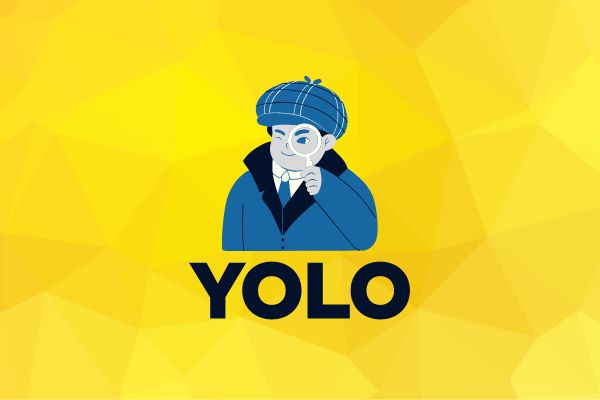Anyone with intermediate knowledge of computer vision would have heard about YOLO algorithms. YOLO stands for You Only Look Once, and v7 refers to the seventh version of the algorithm.
YOLO is an object detection algorithm that uses PyTorch as its base for coding. It is famous for detecting objects in a real-time environment.
YOLO is a great algorithm that gives solutions to many real-life computer vision problems. YOLO has been used in detecting traffic signals, exam proctoring, gaming aimbots, and various industrial automation tools.
In this article, we will learn about the seventh version of the YOLO series, assuming that you understand the basics of machine learning, deep learning, and neural networks.

In case you do not know those topics check out this article. Before getting into YOLO, let us understand what object detection is.
Object Detection
Object detection is a process that involves detecting objects in images and videos. Object detection answers two questions that the user puts out. Where is the object located, and what kind of an object it is. The process of finding where the object is located is called detection, and finding the type of object is called recognition.
Object detection can be classified into two categories: two-stage object detection and one-stage object detection. The term “stage” here refers to the processes that have to happen.
For example, the two processes of two-stage object detection are detecting the possible bounding box region in which an object might be present and classifying that object according to the object class provided. Some commonly used two-stage object detector algorithms include RCNN, Fast RCNN, Faster RCNN, Mask RCNN, and RFCNN.
The one-stage object detection process is nothing but combining, detecting the possible bounding box region in which an object might be present, and classifying that object according to the object class into a single stage.
Algorithms like YOLO made this possible by making an end-to-end neural network that can do detection and predict class probability simultaneously. This process increased the speed and accuracy to a large extent. The cost was also lowered. Another famous one-stage algorithm is SSD.
Now that you have understood what object detection is, let’s dive deep into YOLOv7.
YOLOv7
Since the release of YOLOv1 in 2015, the algorithm has gained immense popularity among the computer vision community. Furthermore, the updated version of the model YOLOv2, YOLOv3, YOLOv4, YOLOv5, YOLOv6, and very much recently, YOLOv7 has been released so far.
Before we get deep into the topic, we should know that there are two versions of YOLOv7 available on the internet, and we are going to talk about the “Official Yolov7 algorithm”. Academia Sinica, the developers of YOLOv5, is the same team that developed the official Yolov7 algorithm.
Note that YOLOv5 has been one of the most successful and commonly used versions of the YOLO series. So the same team creating the updated version is a reason to consider learning it.
Yolov7 is a real-time object detector currently revolutionizing the computer vision industry with its incredible features. The official YOLOv7 provides unbelievable speed and accuracy compared to its previous versions. Yolov7 weights are trained using Microsoft’s COCO dataset, and no pre-trained weights are used.
Significance of YOLOv7
A new paper, “YOLOv7: Trainable Bag-Of-Freebies Sets New State-Of-The-Art for Real-Time Object Detectors”, was released on Jul 6, 2022. The paper link is available here. If you are interested, do check out the paper.
The word Bag of Freebies model refers to increasing the model accuracy by making improvements without actually increasing the training cost. Older versions like YOLOv4 also used the Bag of Freebies model.
The paper states that the model can efficiently predict video inputs ranging from 5FPS to 160FPS. Among all real-time object detectors, YOLOv7 has the highest Average Precision (AP) score of 56.8% creating impressive records.
Yolov7 outperformed both transformer-based object detectors and convolutional-based object detectors. Some of the object detectors that Yolov7 outperformed were YOLOR, YOLOX, Scaled-YOLOv4, YOLOv5, DETR, Deformable DETR, DINO-5scale-R50, ViT-Adapter-B, etc.
The cost of running the model has been reduced by 50% for the same dataset due to its incredible speed and accuracy. The parameters in the hidden layer of the neural networks are also reduced up to 40%.
Model scaling has never been easier. They are somehow able to maintain the original model design and structure while performing compound scaling.
YOLOv7 has achieved 1.5x times higher AP than YOLOv4. This is a big deal because YOLOv7 has 75% fewer parameters and 36% lesser computational speed than YOLOv4.
The implementation of the Academia Sincara paper is available on GitHub. Check it out here.
Final Thoughts
Yolov7 is still a developing algorithm that is in its early stage. There is a lot of room for improvement and correction of issues faced by developers. Once the algorithm is mainstream, it will be incredibly beneficial in solving several computer vision problems.
This article has provided an overview of Yolov7. I hope you understood what Yolov7 is and why it is a big deal. All the best for your future coding endeavors. Happy coding!

